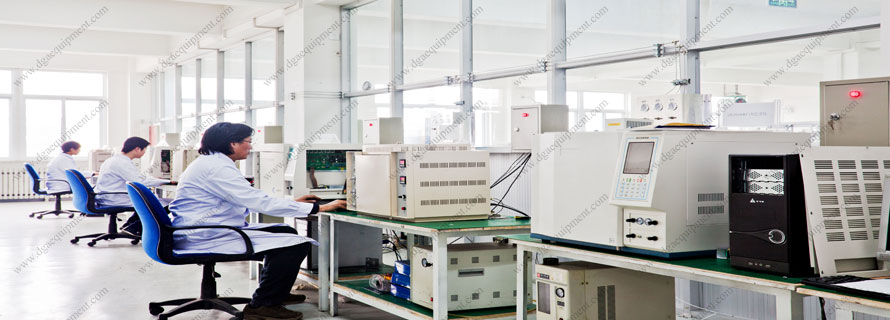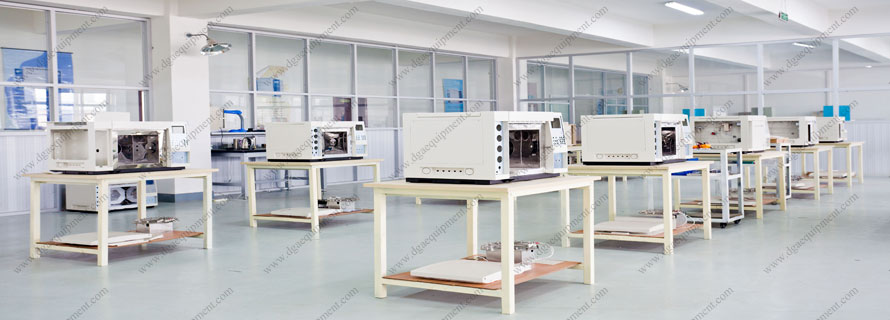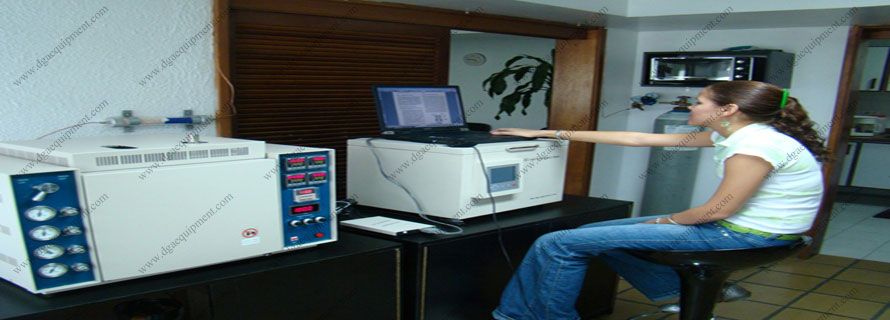ASTM D5846 Standard Test Method for Universal Oxidation Test for Hydraulic and Turbine Oils Using the Universal Oxidation Test Apparatus
6. Apparatus
6.1 Heating Block, as shown on the right in Fig. 1, and as further described in Guide D4871, to provide a controlled constant temperature for conducting the test.
6.1.1 Test cells are maintained at a constant elevated temperature by means of a heated aluminum block which surrounds each test cell.
6.1.2 The test cells shall fit into the block to a depth of 225 +/- 5 mm. When centered, the side clearance of the 38 mm outside diameter glass tube to the holes in the aluminum block shall not exceed 1 mm in any direction.
6.2 Temperature Control System, as shown at lower left in Fig. 1, and as further described in Guide D4871, to maintain the test oils in the heating block at 135 +/- 0.5°C for the duration of the test.
6.3 Gas Flow Control System, as shown in the upper left in Fig. 1, and as further described in Guide D4871, to provide dry air at a flow rate of 3.0 +/- 0.5 L/h to each test cell.
6.3.1 A gas flow controller is required for each test cell.
6.3.2 Flowmeters shall have a scale length sufficiently long to permit accurate reading and control to within 5 % of full scale.
6.3.3 The total system accuracy shall meet or exceed the following tolerances: Inlet pressure regulator within 0.34 kPa (0.05 psig) of setpoint; total flow control system reproducibility within 7 % of full scale; repeatability of measurement within 0.5 % of full scale.
6.4 Oxidation Cell, borosilicate glass, as shown in Fig. 2, and as further described in Guide D4871. This consists of a test cell of borosilicate glass, standard wall; 38 mm outside diameter, 300 +/- 5-mm length, with open end fitted with a 34/45 standard-taper, ground-glass outer joint.
6.5 Gas Inlet Tube, as shown in Fig. 2, and as further described in Guide D4871. This consists of an 8-mm outside diameter glass tube, at least 455 long, lower end with fused capillary 1.5 to 3.5 mm inside diameter. The capillary bore shall be 15 +/- 1 mm long. The lower tip is cut at a 45° angle.
6.6 Basic Head, as shown in Fig. 2, and as further described in Guide D4871. This is an air condenser, with 34/45 standard-taper, ground-glass inner joint, opening for gas inlet tube, septum port for sample withdrawal, and exit tube to conduct off-gases and entrained vapors. Overall length shall be 125 +/- 5 mm.
6.7 Test precision was developed using the universal oxidation/thermal stability test apparatus described in Guide D4871. Alternate apparatus designs for sample heating and for temperature and flow control shall be acceptable provided they are shown to maintain temperature and gas flow within the specified limits.
7. Reagents and Materials
7.1 Reagent grade chemicals shall be used in all tests. Unless otherwise indicated, it is intended that all reagents conform to the specifications of the Committee on Analytical Reagents of the American Chemical Society, where such specifications are available. Other grades may be used, provided it is first acertained that the reagent is of sufficiently high purity to permit its use without lessening the accuracy of the determination.
7.2 Abrasive Cloth, silicon carbide, 100-grit with cloth backing.
7.3 Acetone, conforming to Specification D 329. reagent grade. (Warning - Acetone is flammable and a health hazard.)
7.4 Air, dry with dew point -60°.
7.5 Electrolytic Copper Wire, 1.63 mm in diameter (No. 14 American Wire Gage or No. 16 Imperial Standard Wire Gage), 99.9 % purity, conforming to Specification B 1, is preferred.
7.6 Heptane, knock-test grade, conforming to the following requirements: (Warning - n - Heptane is flammable and a health hazard.)

NOTE 1 - Warning: n-Heptane is flammable and a health hazard.
7.7 Low-Metalloid Steel Wire, 1.59 mm in diameter (No. 16 Washburn and Moen Gage). Carbon steel wire, soft bright annealed and free from rust, of Grade 1008 as described in Specification A 510, is preferred. Similar wire conforming to British Standard 1829 is also satisfactory.
7.8 Propanol-2 (iso-Propyl Alcohol), conforming to Specification D770 reagent grade. (Warning - iso-Propyl alcohol is flammable and a health hazard..)
7.9 Test Paper, chromatographic or filter paper, cellulose, medium porosity, qualitative or quantitative grade. Cut the paper into 50 mm squares or use as larger sheets, ruled with hard pencil into 50 mm squares without cutting.



